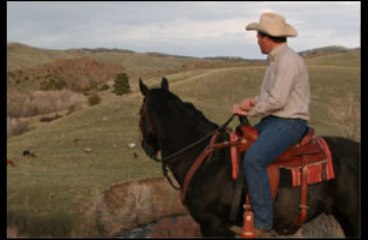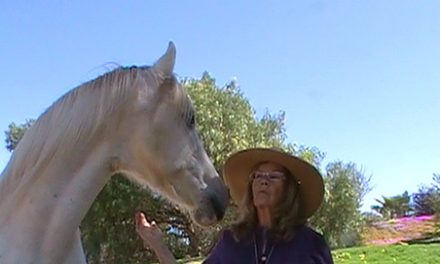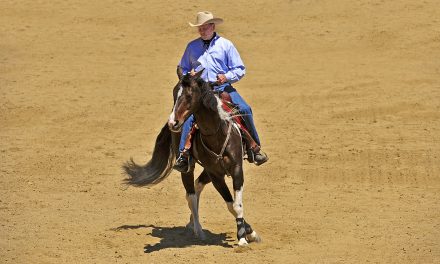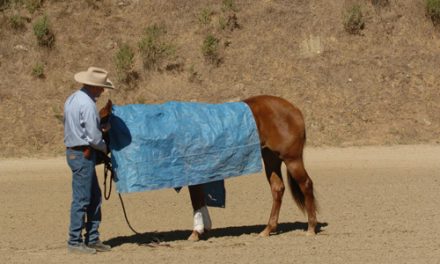 Over the past two month’s articles, you have learned how to teach your horse to soften his face and stop and back up on one rein while staying soft in the bridle. Your horse should be doing these exercises well before you move on to the foundation for collection.
Over the past two month’s articles, you have learned how to teach your horse to soften his face and stop and back up on one rein while staying soft in the bridle. Your horse should be doing these exercises well before you move on to the foundation for collection.
First, I want to mention a few things that can be applied across your training. When things are not going well and you feel stuck in an exercise, stop and ask yourself: What was the last thing your horse was doing well? Maybe you’re stuck on the one rein back up, but he was softening his face really well before you moved to the new exercise. If that’s the case, don’t get into the mindset of making your horse do something. Instead, go back to the place you know you can both win. Work there for a little while, then go back to the harder exercise. Chances are, you will then be able to do it without the problem you were having before. Stepping back from the situation and focusing on what works, rather than what doesn’t, will help keep you from getting frustrated.
So, your horse is softening, stopping and backing up on one rein. We’re going to start the foundation for collection by taking the one rein back up to a more advanced level. Begin asking your horse to stop without disengaging his hindquarters first. Ride him forward, get him soft on the bridle, sit and say whoa. If he stops, ask him to take a few steps back on one rein and release when his nose is soft. If you don’t get a stop, disengage his hindquarters and get a few steps back before releasing. Work on this until you can get a straight stop and back up on one rein.
Now, you are ready to add the second rein. You are going to start by asking for softness on two reins. What you are looking for here is not actual collection but just for the horse’s nose to be soft on both reins. However, you do want to be sure you are driving the horse forward from his hind end when you ask for softness on two reins because that will start to build collection into the exercise. Starting at the walk, go back to the circle s’s exercise that you used when teaching softness on one rein. Just add the second rein as you do it. When your horse softens and tucks his nose, release him. Work on changing directions smoothly, without his head coming up. Remember to release regularly so your horse knows he is on the right track.
When you can get your horse to keep soft on two reins nicely, you are ready to start adding the stop and back up on two reins. Get him soft on two reins, then sit and ask for a stop. Don’t pull back on your reins to get the stop, just sit and ask him to stop off your seat cue. If he doesn’t stop, don’t pull back on both reins. Hold pressure on one rein, and increase pressure on the other, bringing him to a stop with just one rein. When he is stopping nicely without bracing and throwing his head in the air, you are ready to start asking for a few steps back. Remember, your feet move his feet. Don’t pull harder to get steps back, drive more with your feet. If he is bracing against you and locks up, offset his head to one side or the other. Don’t release the reins if your horse is pulling on you. If your horse starts bracing badly and you feel you are getting into a fight, go back to working on one rein for a while, then try two reins again. Remember, find a place where you can both win.
Each time you repeat an exercise, look for some improvement and ask for a little more. For example, if your horse gives you two nice steps back, next time ask for three steps. Once you are getting good soft stops and backing on two reins at the walk, move up to the trot. First work on circle s’s, then stops and backing. If you get stuck, go back to the walk for a while, then move back up to the trot.
It is really important to remember that all you can ask of your horse is for him to try. If he has given you a good honest try, you need to give back to him with a release. Even if he’s not doing the exercise perfectly, all you can ask is that he’s trying. If he tries and tries, and never gets a release and a reward, he will stop trying because there is no place he can win. You need to make sure that you always give him a place where he can win so he stays motivated and keeps trying for you. Once your horse knows that there is a release somewhere, you will see him start searching for it when you start a new exercise. He will try the answers that have worked in the past, then when you don’t release, you will see him start trying new things, because he knows there is a release somewhere. Your consistency will teach your horse to look for the place where he wins, because he knows it is there.
When you are ready to quit for the day, wait until you feel that your horse has given you a good, honest try. Then release, pet him, and put him away. A good try is always a positive place to quit.
Enjoy your horses and until next time, may God bless the trails you ride.
For more information on Ken McNabb’s programs call us at 307-645-3149 or go to www.kenmcnabb.com




